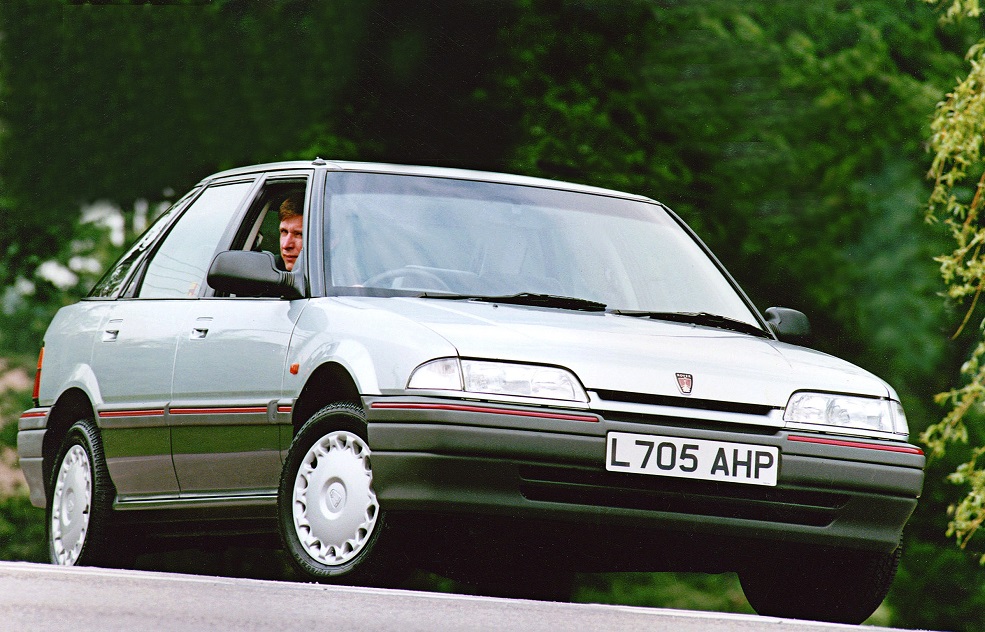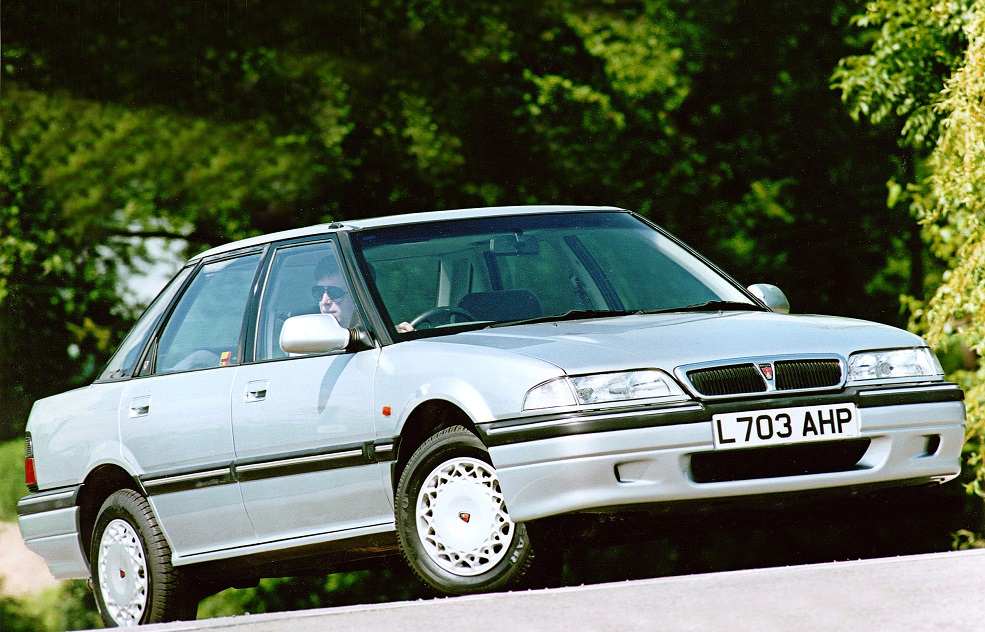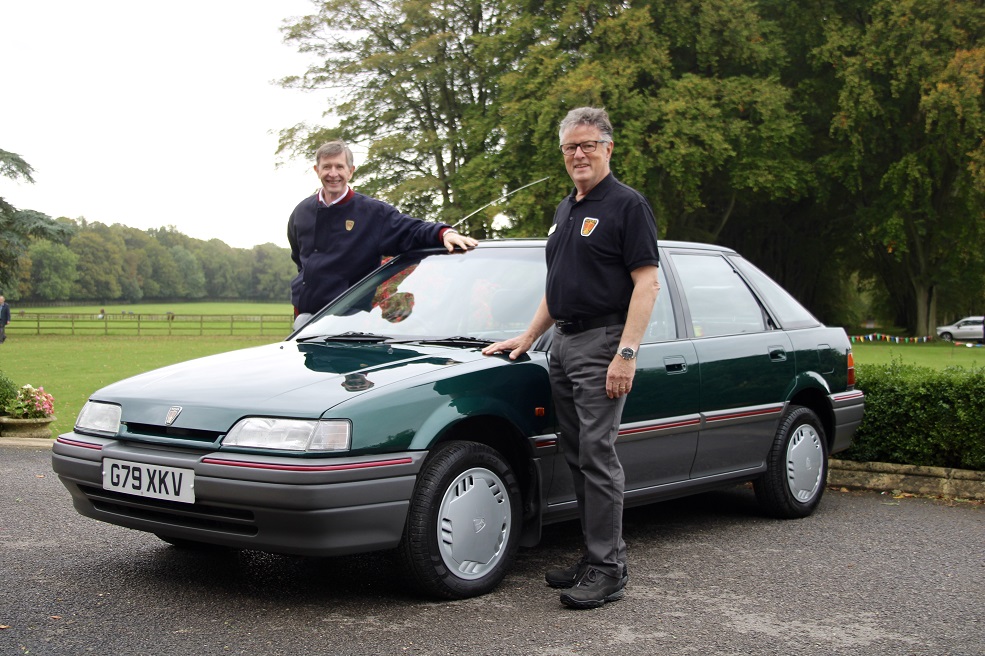Kevin Jones, Head of Product Communications at MG Rover, worked at the marque from the age of 17, spending much of his time there in marketing and PR right up until the doors closed in 2005. Over a decade on, Classics World spoke to Kevin at the recreation of the R8 200 launch about all thing past, present and future of MG Rover.
Classics World: Would you say the launch is an authentic recreation with a similar vibe?
Kevin Jones: There’s definitely a buzz, it’s actually really exciting and lovely to see people fondly associating themselves with the car since the R8 is, after all, the best-selling Rover of them all. To think that we started and launched this car and see this passion that still exists 30 years on is fantastic.
CW: Was there a sense of excitement at the time for the future of Rover?
KJ: There was, it was the start of the new generation for Rover, with the 200, 400, 600 and the evolved 800, as well as the Metro joining the Rover family with Longbridge heritage. It felt like a real moment in time, a special time for Rover.
CW: You’re seen driving in press photos for the 216GSi and 420SLi, was that planned?
KJ: Inevitably when you’re photographing the car, you need someone to drive it. I took pride in having an active role and was happy to be involved in it. That pride lives with you and part of that enthusiasm helps you display the brand and I’ve always taken that passion for the brand and expressed it as much as I can.

CW: And it’s easier to sell a product you genuinely believe in, obviously?
KJ: For sure and looking back, I wonder if there’s any product I didn’t actually believe in and actually they’re all shapes that bring special memories. Rover had a broad appeal, you had degrees of luxury, respect, being British, sportiness in the coupe and three-doors. I can relate to a lot of that and I enjoyed it.
CW: Given your first job was with MG Rover and you were there for over 26 years, what would be your highlight from that extensive career?
KJ: There are so many, it’s hard to pick out just one. The R8 launch would easily rank in my top 10, there were special and intense moments involved with it, but it became the best-selling Rover and marked a moment of great change. I can remember the journalists arriving with mobile phones that fitted into their pockets, that was a defining moment. These cars had optional power steering, air conditioning and they really were a new expression of something previously only available in expensive luxury cars. It felt like a milestone moment.
CW: So long after that milestone, do you remember the final days of MG Rover?
KJ: I do, I stayed until 7pm on those last two days, primarily to make sure I was the one who turned the lights out, because it meant so much to me.

CW: Unofficially, do you think there was anything that could’ve saved Rover in the last moments, or did you realise it was a losing battle?
KJ: With something like the R8 launch, you got a real sense that Rover was a fabric of the country in an automotive sense, anything we could do to save it or prolong its life was important. In those last days, I would go to work each day knowing anything could happen that might make that day the last. In a PR sense, I had the difficult job of promoting the cars as my day job, but because seniors and corporate didn’t answer difficult questions, journalists would ring me. I’d be writing a press release one sentence at a time, because I had two phones ringing constantly with general business calls and press contacting me. Very frenetic, very exciting, but terribly straining.
We always believed that the route with the Chinese was a possibility until we came to realise that the government and various departments came late to the realisation that we were in trouble and were misguided into thinking the right thing to do was to let the company fall, so as to pick it back up again. The sad thing is, within the company were some very clever, experienced, loyal people. I was lucky to be a part of that and communicate all that we achieved whilst being loyal and respectful to the brand.
CW: In the days and weeks leading up to April 8th 2005, what was morale like? Did you know things were winding down?
KJ: We were all working to the last hour of the last day, DTI had invested millions to keep the plant going for that last week. I think we knew the inevitable would happen, but then we’d been so prepared for it for years because as exciting as sustaining MG Rover had been – we were effectively a family of 5000 – we were still doing the job we were doing, right up to the last days, knowing that we might not get paid in a sense. We’d had the investment in the brand, it was a family thing.

Kevin Jones – Left
CW: It’s nice that there were so many people emotionally connected and had this affinity with the brand
KJ: It doesn’t leave you – there are lots of our cars still around that carry such fond memories and some of those last models, to my mind still look fresh today. Cars like the R8 are timeless, not necessarily modern-looking, but still elegant.
CW: So on that basis, what is your personal favourite?
KJ: My favourite car was the three-door R8 because I remember the reveal of that car at the NEC and it looked like a Red Arrows jet. I had one that had the RSP suspension, it handled divinely, looked amazing and I had it photographed in front of the Red Arrows. There’s so many, I had six different 200 Coupes, it’s hard to pick a favourite, but my red three-door stands out.






